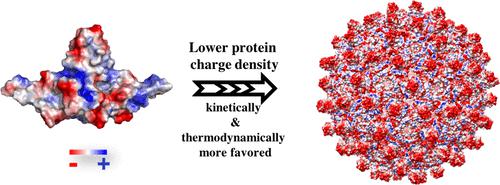Role of Protein Charge Density on Hepatitis B Virus Capsid Formation
Xinyu Sun† ![]() , Dong Li†||, Zhaoshuai Wang§⊥, Panchao Yin†#
, Dong Li†||, Zhaoshuai Wang§⊥, Panchao Yin†# ![]() , Rundong Hu‡, Hui Li†, Qiao Liu†, Yunyi Gao†∇, Baiping Ren‡, Jie Zheng‡
, Rundong Hu‡, Hui Li†, Qiao Liu†, Yunyi Gao†∇, Baiping Ren‡, Jie Zheng‡ ![]() , Yinan Wei*§
, Yinan Wei*§ ![]() , and Tianbo Liu*†
, and Tianbo Liu*† ![]()
† Department of Polymer Science
‡ Department of Chemical and Biomolecular Engineering, The University of Akron, Akron, Ohio 44325, United States
§ Department of Chemistry, University of Kentucky, Lexington, Kentucky 40506, United States
ACS Omega, 2018, 3, (4), pp 4384-4391
DOI: 10.1021/acsomega.8b00021
Publication Date (Web): April 20, 2018
Copyright © 2018 American Chemical Society
*E-mail: Yinan.Wei@uky.edu (Y.W.).; tliu@uakron.edu (T.L.)

The role of electrostatic interactions in the viral capsid assembly process was studied by comparing the assembly process of a truncated hepatitis B virus capsid protein Cp149 with its mutant protein D2N/D4N, which has the same conformational structure but four fewer charges per dimer. The capsid protein self-assembly was investigated under a wide range of protein surface charge densities by changing the protein concentration, buffer pH, and solution ionic strength. Lowering the protein charge density favored the capsid formation. However, lowering charge beyond a certain point resulted in capsid aggregation and precipitation. Interestingly, both the wild-type and D2N/D4N mutant displayed identical assembly profiles when their charge densities matched each other. These results indicated that the charge density was optimized by nature to ensure an efficient and effective capsid proliferation under the physiological pH and ionic strength.

